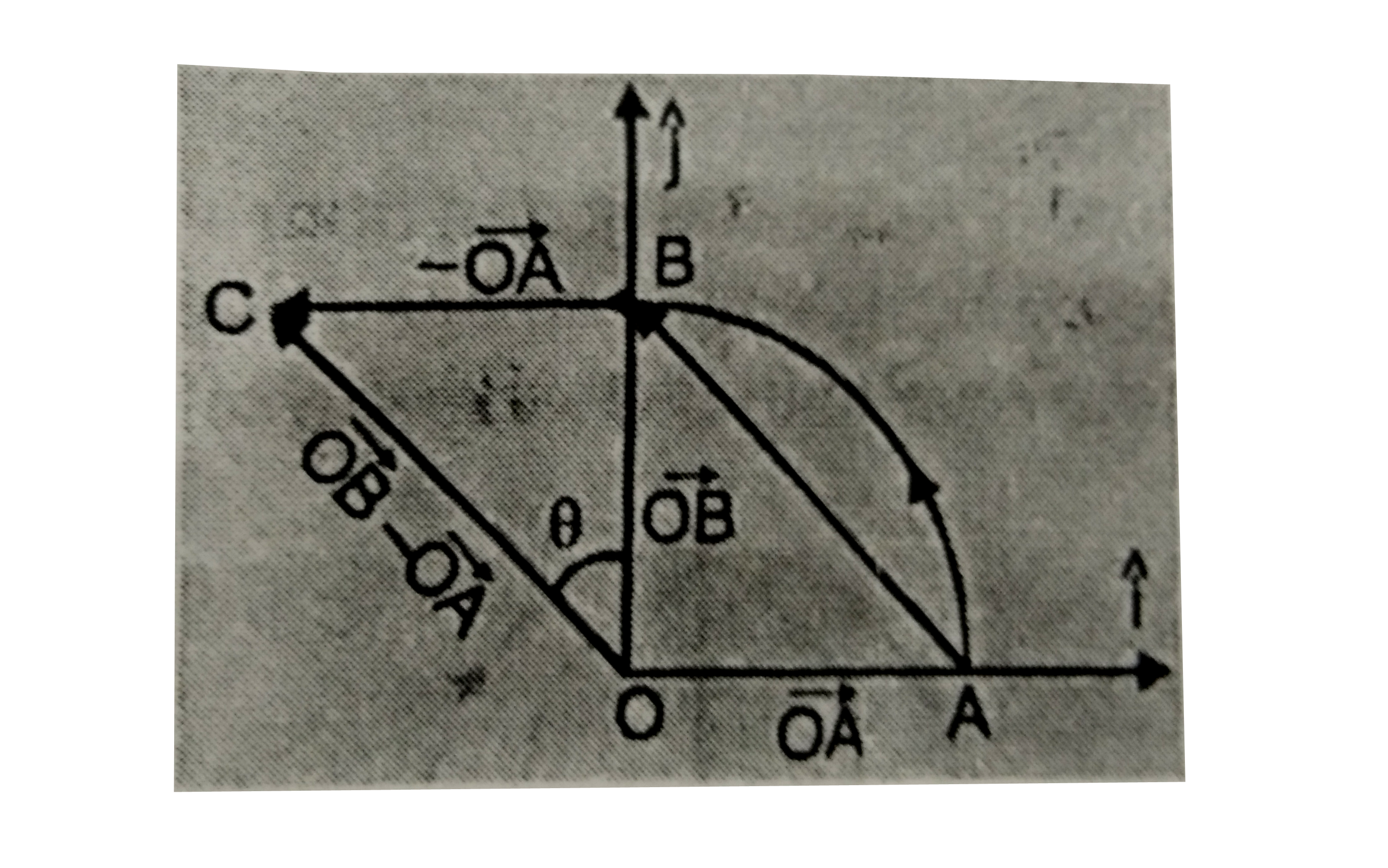The position x of a particle varies with time t as x=at2−bt3. The acceleration at time t of the particle will be equal to zero, where (t) is equal to .Solution in Gujrati
The correct Answer is:5

As observed from A, B moves perpendicular to line of motion of A.
It means velocity of b along A is equal to velocity of a
VBcos30=100√3
VB=200
If a is observer a remains stationary therefore
t=500VBsin30=500100=5
Topper's Solved these Questions
- MOTION IN A PALNEBOOK - ALLEN CHAPTER - MOTION IN A PALNEEXERCISE - PHY
75 Videos
- MOTION IN A PALNEBOOK - ALLEN CHAPTER - MOTION IN A PALNEEXERCISE - EXERCISE-1
99 Videos
- MOTION IN A PALNEBOOK - ALLEN CHAPTER - MOTION IN A PALNEEXERCISE - SUBJECTIVE QUESTION
3 Videos
- KINEMATICS-2DBOOK - ALLEN CHAPTER - KINEMATICS-2DEXERCISE - Exercise (O-2)
47 Videos
- NEWTON'S LAWS OF MOTION & FRICTIONBOOK - ALLEN CHAPTER - NEWTON'S LAWS OF MOTION & FRICTIONEXERCISE - EXERCISE (JA)
4 Videos
Similar Questions
A particle goes along a quadrant of a circle of radius 10m from A to B as shown in fig. Find the magnitude of displacement and distance along the path AB, and angle between displacement vector and x-axis ?

View SolutionThe distance x of a particle moving in one dimensions, under the action of a constant force is related to time t by the equation, t=√x+3, where x is in metres and t in seconds. Find the displacement of the particle when its velocity is zero.
View SolutionIf a ball is thrown vertically upwards with a velocity of 40m/s, then velocity of the ball after 2s will be (g=10m/s2)
View SolutionA particle is moving in xy-plane .At certain instant the components of its velocity and acceleration are as follows ux=3m/s,uy=4m/s,ax=2m/s2anday=1m/s2. The rate of change of speed at this moment is
View SolutionA piece of wire is bent in the shape of a parabola y=kx2 (y-axis vertical) with a bead of mass m on it. The bead can slide on the wire without friction. It stays at the lowest point of the parabola when the wire is at rest. The wire is now accelerated parallel to the x-axis with a constant acceleration a. The distance of the new equilibrium position of the bead, where the bead can stay at rest with respect to the wire, from the y-axis is:
View SolutionThe position x of a particle varies with time t as x=at2−bt3. The acceleration at time t of the particle will be equal to zero, where (t) is equal to .
View SolutionThe position x of a particle varies with time t as X=at^(2)-bt^(3).The acceleration of the particle will be zero at time (t) equal to
View SolutionThe position x of a particle varies with time t as x=at^(2)-bt^(3) .The acceleration of the particle will be zero at time t equal to
View SolutionThe position x of a particle varies with time t as x = at^(2) -bt^(3) . For what value of time acceleration is zero?
View SolutionThe position x of a particle varies with time (t) as x = at^2- bt^3 . The acceleration at time t of the particle will be equal to zero, where t is equal to :
View SolutionThe position x of a particle varies with time t as x=at2−b. For what value of t acceleration is zero?
View SolutionThe position x of a particle varies with time t as x=at2−bt3.The acceleration of the particle will be zero at time t equal to
View SolutionThe position x of a particle varies with time t as x=at2−bt3.The acceleration of the particle will be zero at time t equal to
View SolutionThe position x of a particle varies with time t as x=at2−bt3.The acceleration of the particle will be zero at time t equal to
View SolutionThe position x of a particle varies with time t as x=at2−bt3 . The acceleration of the particle will be zero at time t equal to
View SolutionThe position x of a particle varies with time t as x=at2−bt3. The acceleration of the particle will be zero at time t equal to
View Solution
